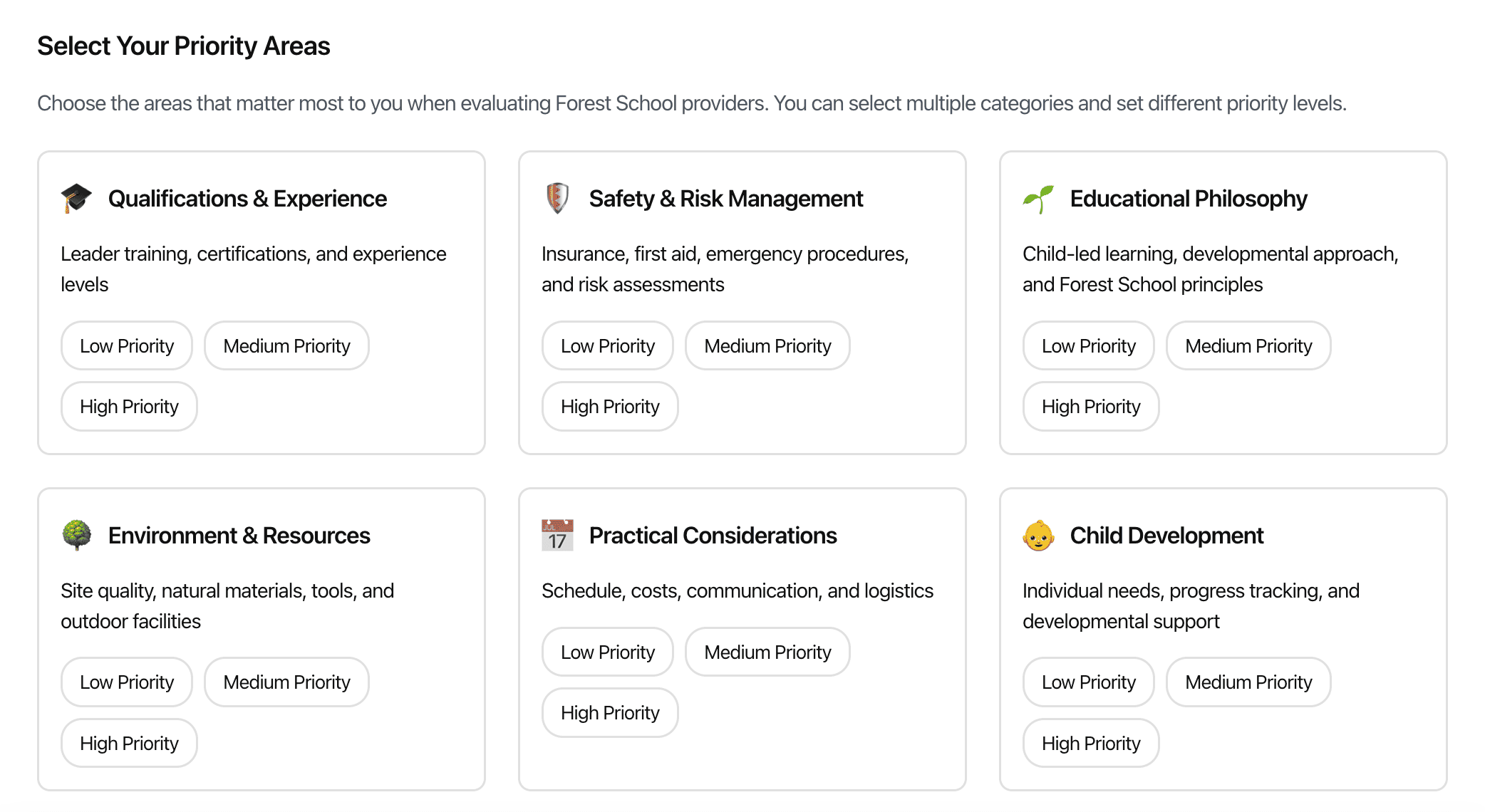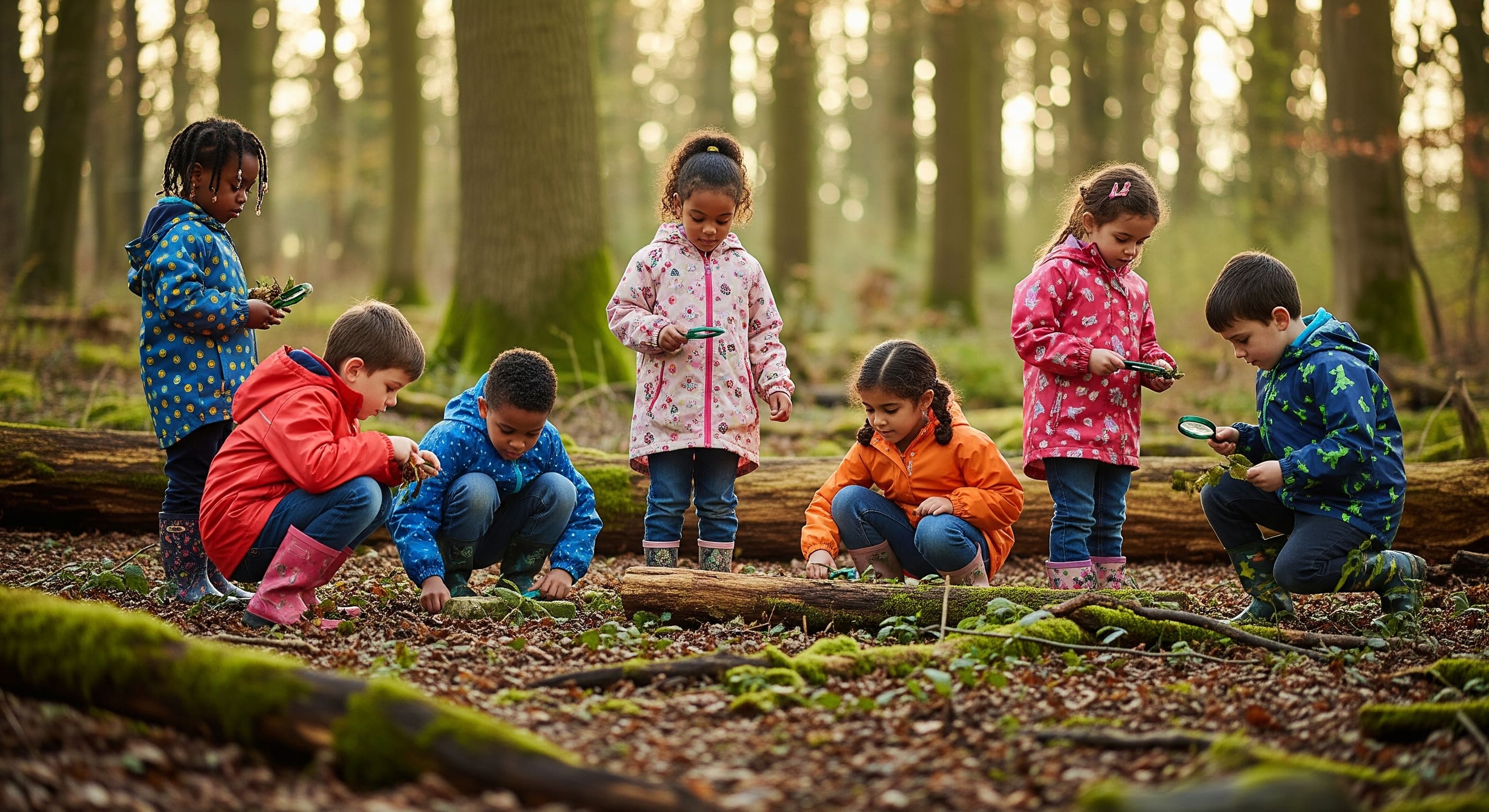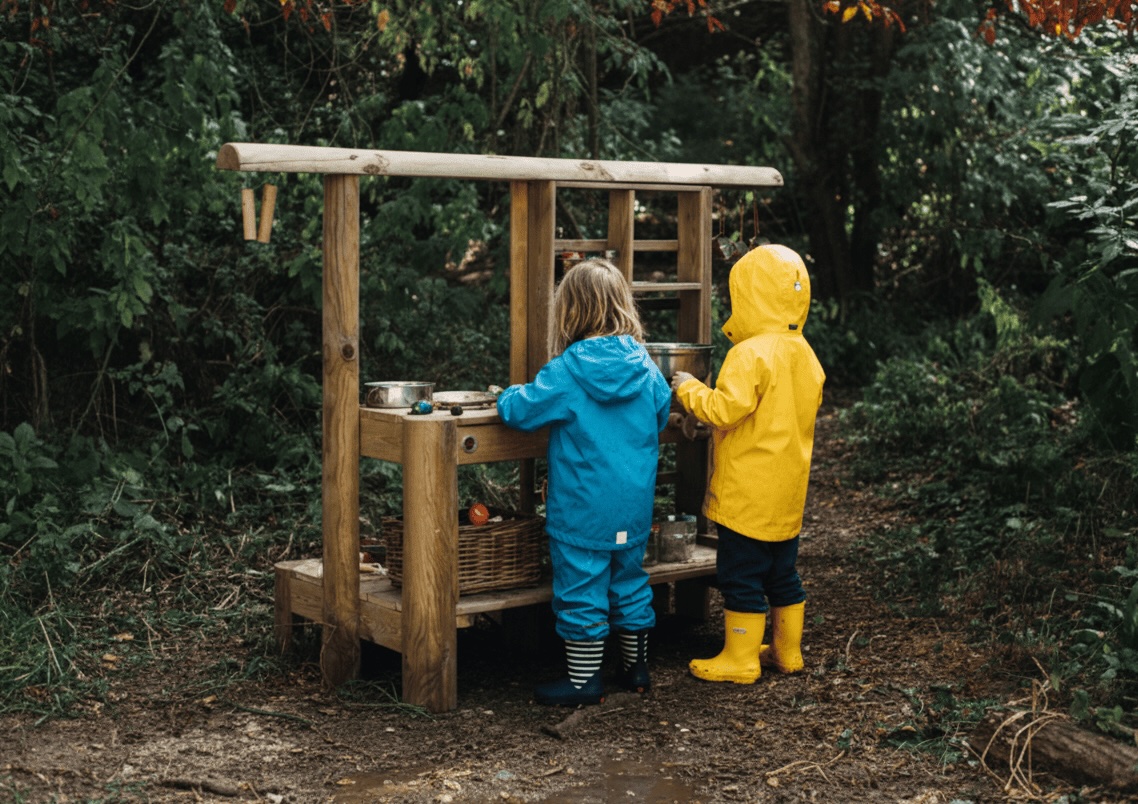· guides · 8 min read
What is Forest School? A Complete Guide for Parents
Discover everything you need to know about Forest School! From its Scandinavian roots to proven benefits for children's development, learn why this nature-based approach is transforming education across the UK.

With childhoods increasingly spent indoors, many parents and educators across the UK are turning to Forest School. But this is more than just a chance for children to play outside; it is a distinct educational philosophy with a proven track record.
At its core, Forest School is a child-led learning process, delivered through regular, long-term sessions in a natural setting. It is specifically designed to build resilience, confidence, and a genuine connection with nature. So, what does a Forest School session actually involve, and how does it differ from a school trip or a walk in the park?
This comprehensive guide will answer those questions, covering the core principles, the tangible benefits for your child, and how to identify a quality provider.
Quick Navigation:
- Understanding Forest School
- The Six Core Principles
- Forest School vs Traditional Education
- Proven Benefits for Children
- Who Can Benefit
- What Happens in Sessions
- Finding the Right Provider
Ready to explore? You can use our Forest School Finder to discover qualified providers in your area.
Understanding Forest School: More Than Outdoor Play
The Forest School Definition
The Forest School Association defines Forest School as:
A child-centred inspirational learning process that offers opportunities for holistic growth through regular sessions in a natural environment.
But what does this mean in practice? Unlike a one-off nature walk, Forest School is:
- Regular and long-term: Sessions happen consistently over months or even years.
- Child-led: Activities emerge from the children’s own interests and curiosity.
- Risk-aware: Children learn to assess and manage appropriate risks in a supportive setting.
- Holistic: It nurtures emotional, social, physical, and intellectual development all at once.
From Scandinavia to the UK
With its roots in 1950s Scandinavia, the Forest School concept arrived in the UK in the 1990s and has grown exponentially since. This growth reflects mounting evidence that children benefit enormously from regular, deep-seated experiences in nature, particularly in our increasingly digital world.
The Six Core Principles of Forest School
These six principles are the bedrock of genuine Forest School and distinguish it from general outdoor education.
| Principle | What It Means | Why It Matters |
|---|---|---|
| Child-Centred Learning | Activities follow children’s interests and curiosity. | Develops intrinsic motivation and ownership of learning. |
| Regular Sessions | Consistent attendance over an extended period. | Allows deep relationships and skills to develop gradually. |
| Natural Environment | Sessions are held in a woodland or natural setting. | Provides varied, stimulating, ever-changing learning opportunities. |
| Holistic Development | Focuses on emotional, social, physical, and cognitive growth. | Nurtures the whole child, not just academic achievement. |
| Risk-Benefit Approach | Uses appropriate challenges to support learning. | Builds confidence, resilience, and practical life skills. |
| Qualified Leadership | Sessions are led by trained Forest School practitioners. | Ensures quality provision grounded in an understanding of child development. |
A Forest School leader won’t arrive with a predetermined agenda. Instead, they observe. If a child finds an interesting beetle, this might spark a group exploration of minibeasts, building habitats, or even creating stories about forest creatures. Children learn through direct experience, guided by their own interests.
Forest School vs Traditional Education: Key Differences
Understanding how Forest School differs from conventional schooling helps to explain its unique benefits.
| Aspect | Traditional Education | Forest School |
|---|---|---|
| Environment | Indoor classrooms with controlled conditions. | Natural outdoor spaces with ever-changing conditions. |
| Curriculum | Subject-based lessons following a set structure. | Interest-led exploration across multiple learning areas. |
| Risk Management | Focus on risk elimination to ensure absolute safety. | A risk-benefit approach that allows for appropriate challenges. |
| Assessment | Formal testing and academic benchmarks. | Observation-based assessment focusing on holistic development. |
| Time Scales | Daily lessons with termly progression. | Extended projects developing over months or seasons. |
Forest School doesn’t aim to replace traditional education; it complements it. The skills and confidence gained in the woods can enhance all areas of a child’s development and learning.
Proven Benefits for Children’s Development
Research has consistently demonstrated Forest School’s positive impact on child development. Studies identify key benefits in confidence, social skills, communication, motivation, physical skills, and overall knowledge.
Confidence and Self-Esteem
The Forest School environment naturally builds confidence through:
- Achievement without comparison: Each child’s journey is unique.
- Practical problem-solving: Tackling real challenges with creative solutions.
- Gradual skill building: From watching a leader use a tool to using it independently.
Physical Development and Motor Skills
Regular attendance significantly improves both gross motor skills (climbing, balancing) and fine motor skills (using tools, crafting). Children learn to assess risk for themselves, leading to better physical decision-making and lifelong comfort in natural environments.
Social and Emotional Development
The collaborative, child-led nature of Forest School is ideal for developing key social skills:
- Communication: Negotiating shared projects and expressing ideas.
- Empathy: Caring for living things and supporting peers.
- Emotional Regulation: Learning to process frustration and success in a supportive group.
Cognitive and Academic Benefits
While not academically focused, Forest School supports learning by fostering:
- Problem-solving: Engineering a shelter from natural materials.
- Scientific thinking: Testing ideas through natural experiments.
- Language development: Gaining a rich vocabulary from sensory experiences.
A Swedish study found that children in outdoor-focused preschools had better coordination, improved attention spans, and greater social skills.
Mental Health and Wellbeing
Time in nature is proven to reduce stress and improve well-being. Forest School helps children develop:
- Stress resilience: Coping with challenges in a supportive environment.
- Mindfulness: Developing present-moment awareness through sensory engagement.
- A connection to nature: Understanding their place in the natural world.
Who Can Benefit from Forest School?
The Forest School model is highly adaptable, serving all age groups from toddlers to teenagers. While the core principles remain the same, activities evolve from simple sensory exploration in early years to more complex, independent projects for teenagers undertaking advanced environmental work.
The approach is also recognised as being particularly beneficial for children with additional needs, such as ADHD or anxiety. Reports show that children with a range of conditions, including Autism Spectrum Condition (ASC), can experience significant gains in social skills and independence. For a child who may struggle with sensory overload in a traditional classroom, the woodland provides a unique setting; its physical and sensory nature helps to reduce stress and regulate emotions, offering valuable opportunities for success.
What Happens in a Typical Forest School Session?
While child-led, most sessions follow a reliable rhythm:
- Opening Circle: A welcome, a safety chat, and an introduction to any new tools or opportunities.
- Free Exploration: The main part of the session, where children initiate their own activities, from den building to bug hunting, with leaders supporting their interests.
- Closing Circle: A time to share discoveries, reflect on the session, and plan for the future.
Activities emerge naturally but often include tool use (whittling, sawing), fire lighting and cooking, shelter building, and nature crafts.
Crucially, Forest School embraces all weather. The motto, “There is no such thing as bad weather, only inappropriate clothing,” holds true. For tips on kitting out your child, see our comprehensive Forest School clothing guide, or use our Forest School Clothing Advisor for personalised recommendations based on the season and weather.
Finding the Right Forest School Provider
Not all outdoor education is genuine Forest School. When looking for a provider, ensure the leaders hold a Level 3 Forest School Leader qualification and have up-to-date outdoor first aid and DBS checks.
Instead of a simple checklist, it’s vital to understand a provider’s ethos. You should feel confident asking them about how they follow children’s interests, their approach to risk, and their typical adult-to-child ratios. For a complete list of what to look for and ask, please see our dedicated article: Choosing the Right Forest School: Key Questions for Parents.
Instead of a simple checklist, it’s vital to understand a provider’s ethos. To help you prepare, you can create a personalised list of questions based on your family’s priorities using our interactive Forest School Interview Kit. For more general guidance, you can also read our dedicated article on Key Questions for Parents.

Choosing a provider involves weighing up everything from their educational philosophy to their safety procedures. Our Interview Kit can help you build the right questions to ask.
Be cautious of providers who offer only one-off “taster” sessions, have rigid, adult-led programmes, or cannot clearly explain their Forest School qualifications and philosophy.
Conclusion: Why Forest School Matters
In our increasingly indoor, structured world, Forest School offers a vital return to what children need: nature, appropriate challenges, and holistic development. It provides an essential space for them to grow into resilient, creative, and confident individuals.
The investment in Forest School is an investment in your child’s future—nurturing skills, confidence, and a connection to the natural world that will benefit them for life.
Ready to begin your family’s adventure? Use our Forest School Finder to discover qualified providers in your area.
Frequently Asked Questions
Q: What age can children start Forest School? A: Children can typically start from around 18 months, though readiness varies. Most providers offer sessions tailored to specific age groups, from toddlers to teenagers.
Q: How does Forest School work in winter? A: Forest School runs year-round. Winter offers unique learning opportunities, from fire-building for warmth to observing seasonal changes. Appropriate all-weather clothing is the key to a positive experience.
Q: Is Forest School safe? A: Quality Forest School uses a risk-benefit approach. Leaders are highly trained in risk assessment and first aid to create a setting where children can experience appropriate challenges safely. Minor scrapes are a normal part of learning to manage personal risk.
Q: How often should my child attend? A: Regular, weekly sessions over a long term (e.g., six months or more) deliver the most profound benefits, allowing skills, relationships, and confidence to develop gradually.
Q: What is the difference between Forest School and an outdoor nursery? A: Forest School is a specific pedagogy that must be delivered by a qualified Level 3 practitioner and follows the six core principles, including being child-led and long-term. While an outdoor nursery offers learning outside, it may not follow the official Forest School ethos.




